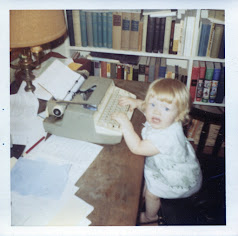I started my first tree on Ancestry in 2008 and now in 2024, I thought that those names, Joseph Elijah Hobbs and Elizabeth Merritt, came from my grandfather's research and writing, but I can't find any evidence to back that up. I could have taken their names from census records, also, but let's just say it's a good thing I was planning to review all the facts on this branch anyway.
It was hard to put myself back in my 2008 shoes and pretend I didn't know Joseph and Elizabeth's names, so I started a new private tree, just for myself, just adding the information I would have had back then. One thing I have going for me is that I know the names of Ada's siblings who also came to the United States after the deaths of their parents. Although there is no record generated in this country, like a census record, that contains all of their names in one place, the relationships are documented through family stories, obituaries and those newspaper accounts that you don't see anymore, like one that mentioned my great-grandmother travelling out of town for her sister's funeral. This gives me confidence that the hint Ancestry gave me for the UK 1861 Census is correct. It contains my great-grandmother's name and those of her known siblings, along with those of their parents.
It also, very helpfully, confirms that my great-grandmother was born in Poplar in London's East End, which fans of "Call the Midwife" may recognize. This is important because Ada was the only child of this family, that I know of, to be born outside of the county of Somerset. And not a short distance either but well over one hundred miles. That's a considerable distance in 1855.
It also means that I haven't yet found Ada's baptismal record. Not all church registers for Poplar have been digitized according to multiple sources, but now that birth certificates can be ordered and fulfilled online, I was happy to have an excuse to plunk down a few dollars and order my first English certificate.
And there she is. I don't know how I can be so excited about a birth certificate after 14 years of genealogy, but, knowing it would be ready yesterday, I looked for the email from the GRO before I even got out of bed. And did I wait the suggested 24 hours to check the site for it? I did not!
I will try to track down Ada's baptism soon, but for now, I am satisfied that I had the correct names for her parents. Elizabeth's maiden name is further confirmed by the fact that her children lived with two of her brothers in the United States and I have those census records.
I don't know why I've been putting off making a locality guide for Somerset, England, but I got a little kick-start from Legacy Family Tree Webinars this week, watching the recent Introduction to County Research in England by Mia Bennett, so that's what I'll be doing next.











